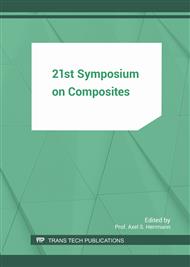p.740
p.745
p.753
p.763
p.778
p.786
p.793
p.800
p.807
Sensor Integration in Castings Made of Aluminum - New Approaches for Direct Sensor Integration in Aluminum High Pressure Die Casting
Abstract:
The use of sensors for detection, measurement and evaluation of mechanical and thermal loads is well known and essential for the implementation of »Structural Health Monitoring« (SHM). For this, sensors are mainly used for condition monitoring of mechanical loads and their impact to the castings state, which is a decisive advantage for safety-related components. The use of sensors on the surface of metallic components, in particular of cast metal components made of aluminum, is still limited to the use of strain gauges. They are usually applied on the surface of the cast metal components and get fixed by adhesives. The idea is, to integrate the sensors directly during the aluminum casting process. Since integrated sensors are naturally protected against chemical and mechanical influences, furthermore the load can be measured directly at the point of interest inside the component. Measurement data can be recorded and provide a good data basis for future calculations and dimensioning of components, which is known as »Data Mining« or »Industrial Data Space«. New technology and material combinations, which allow the fabrication of sensors capable of withstanding force and temperature during the integration process in aluminum casting, are investigated.In this paper, the design and fabrication of a strain gauge printed on an aluminum sheet is shown. These sensor sheets get integrated in aluminum during high pressure die casting (HPDC) in a way that a specimen is build up. The specimen is characterized in a fatigue bending test and the sensor data was read permanently during this test. It is shown that the new approach with printed thick film sensors on aluminum substrate sheets works properly to withstand the heavy thermal conditions during high pressure die casting. The fabricated sensor is able to sense the mechanical tiredness and detects the fatigue of the metal matrix. This a first step to use such material integrated sensors in structural health monitoring applications.
Info:
Periodical:
Pages:
786-792
Citation:
Online since:
July 2017
Authors:
Permissions:
Share:
Citation:


